
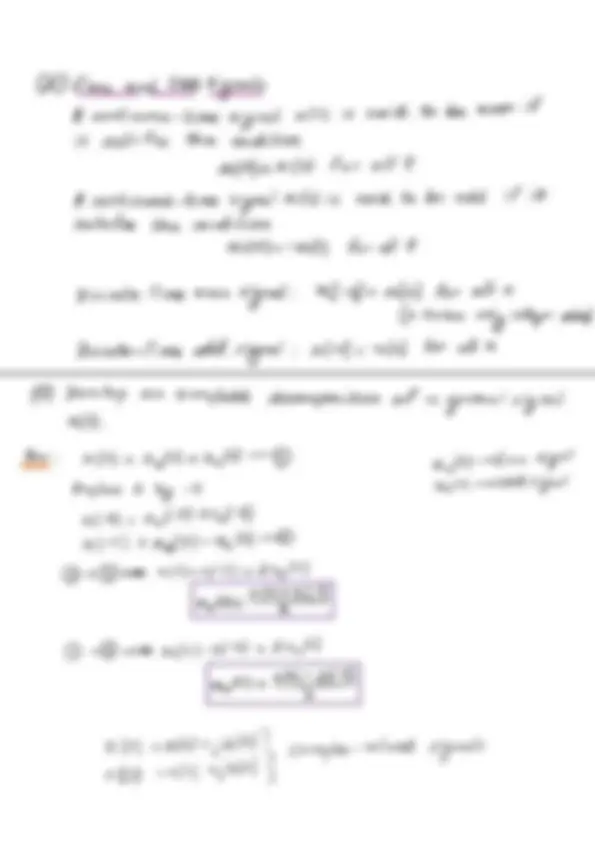
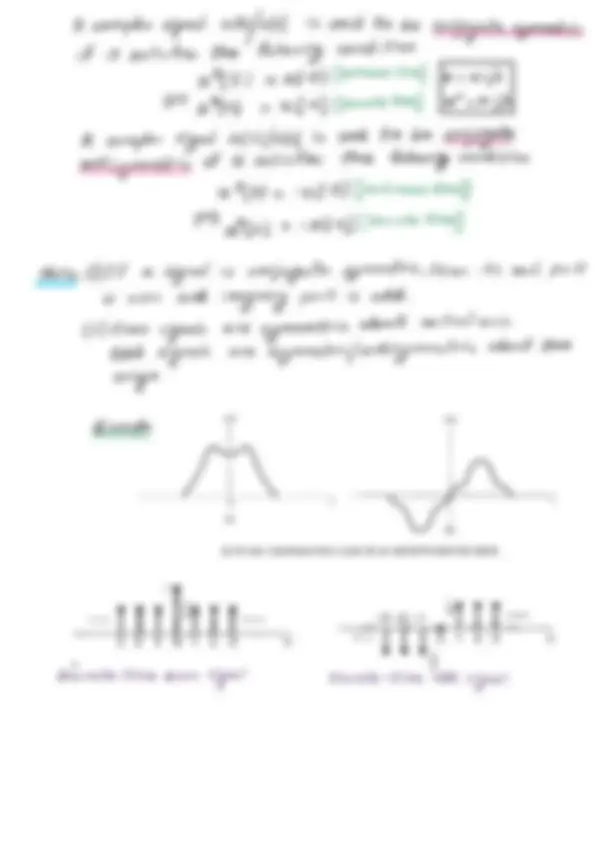
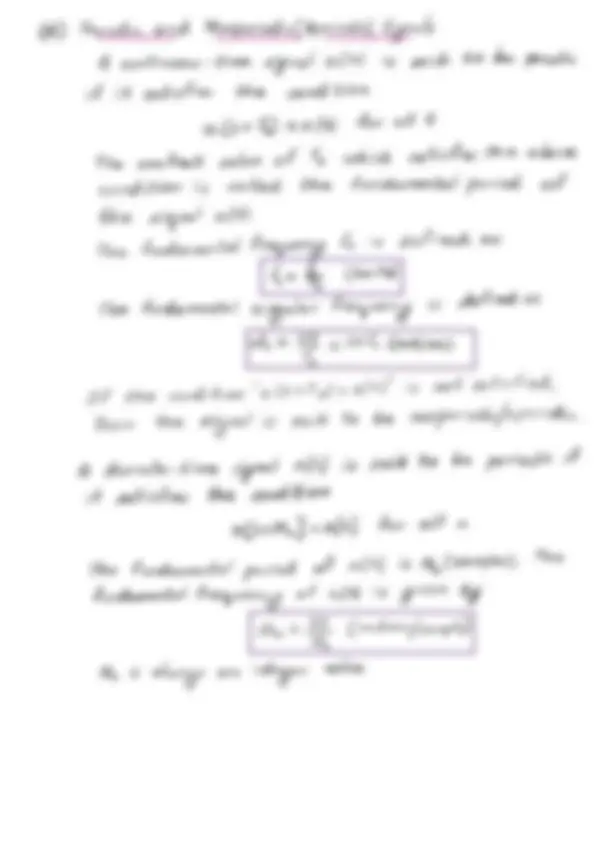
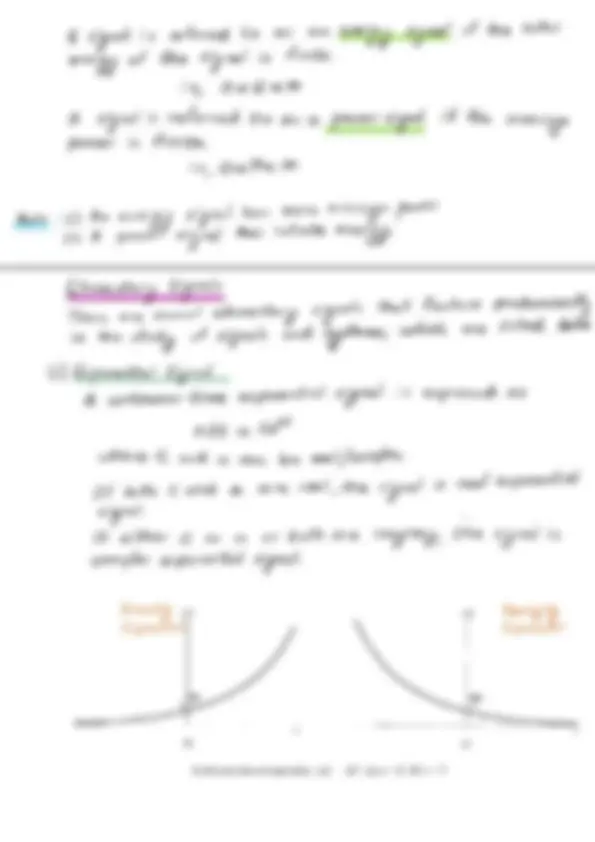
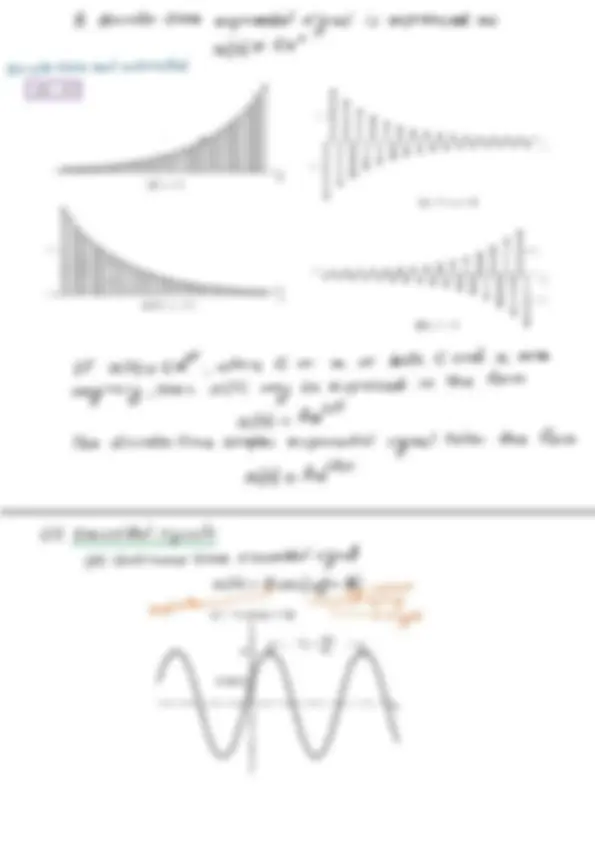
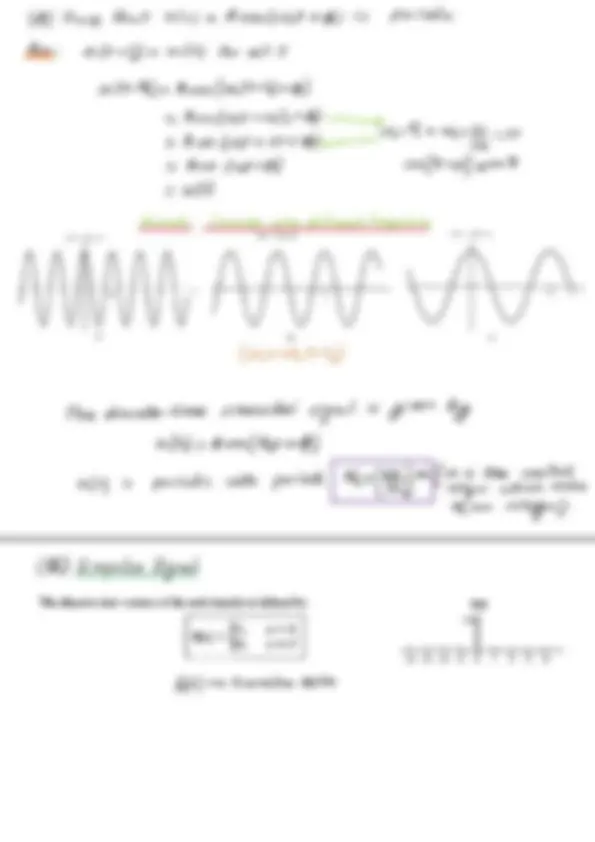
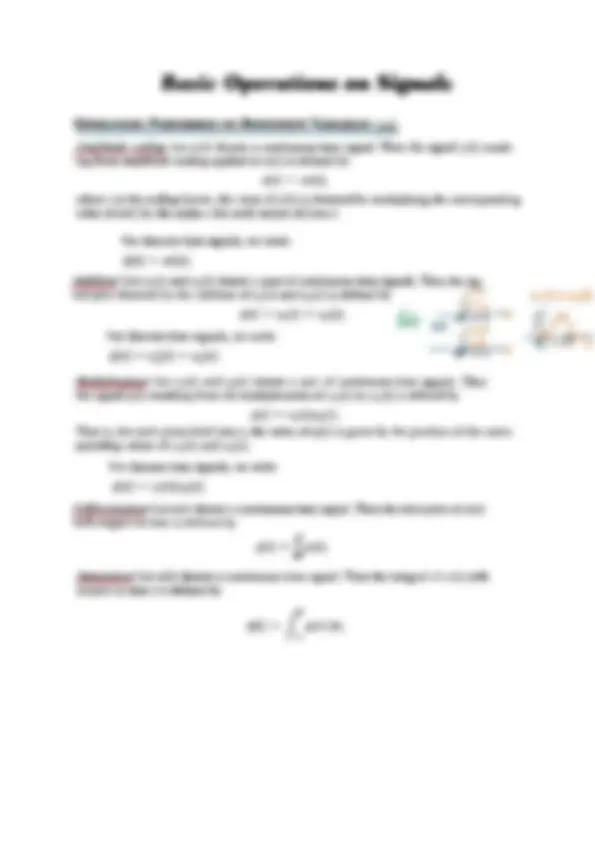
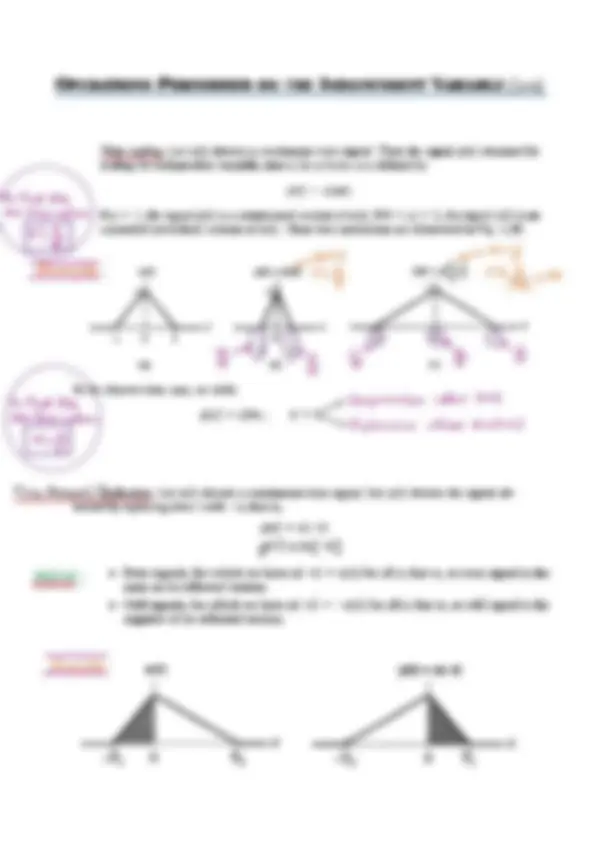
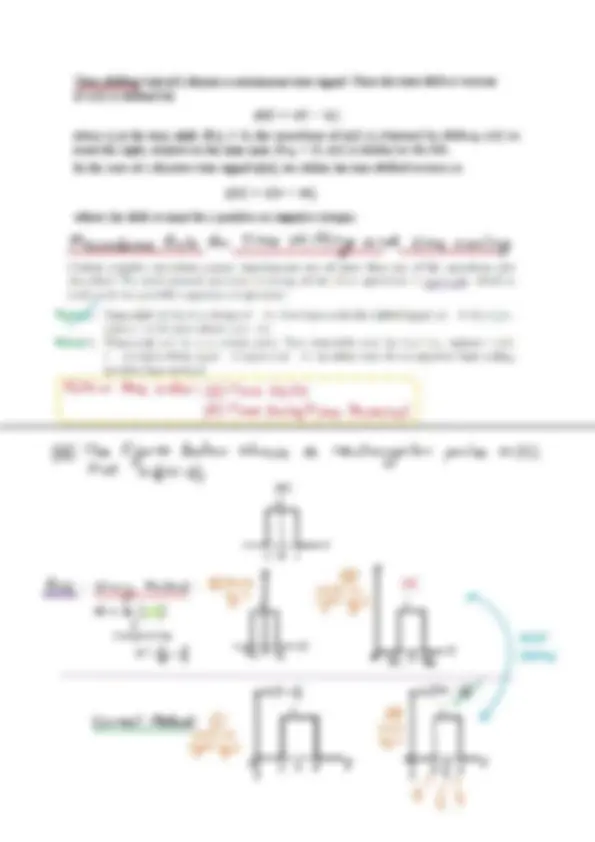
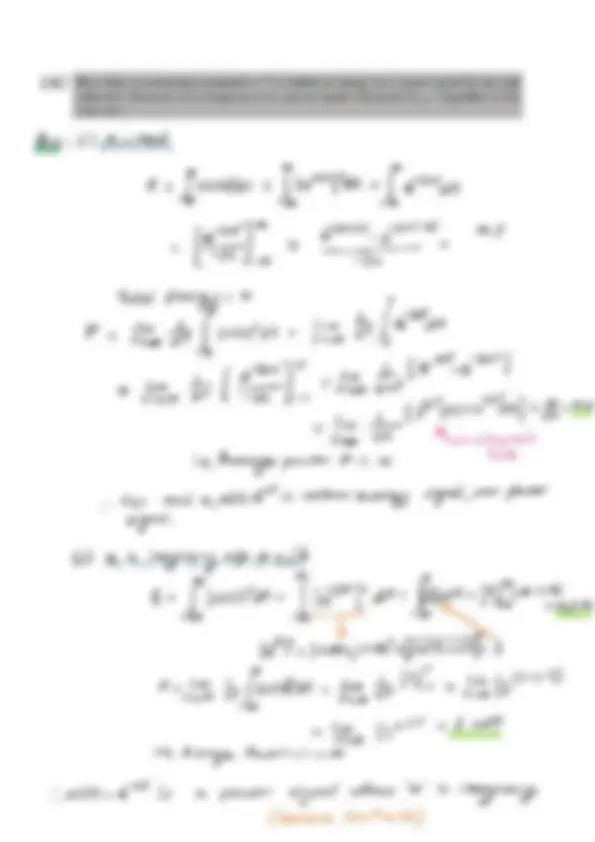
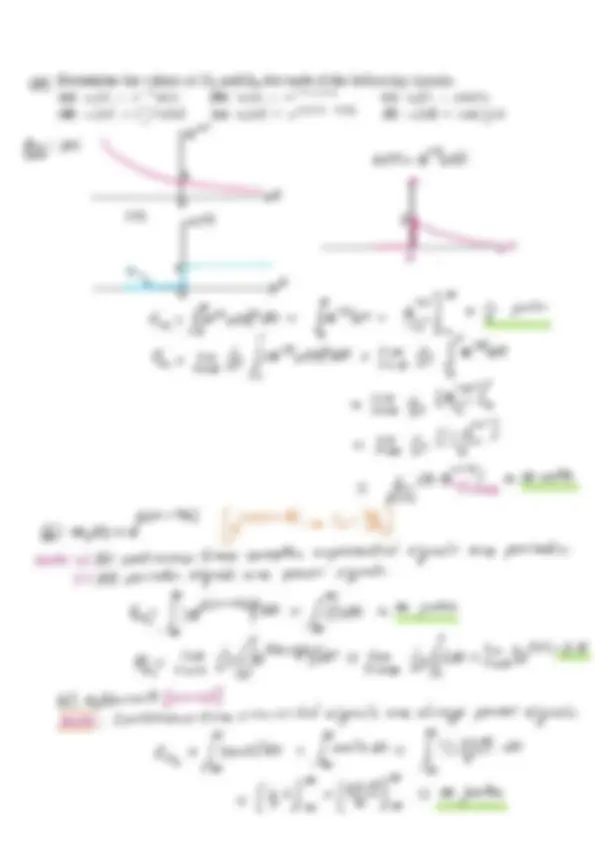
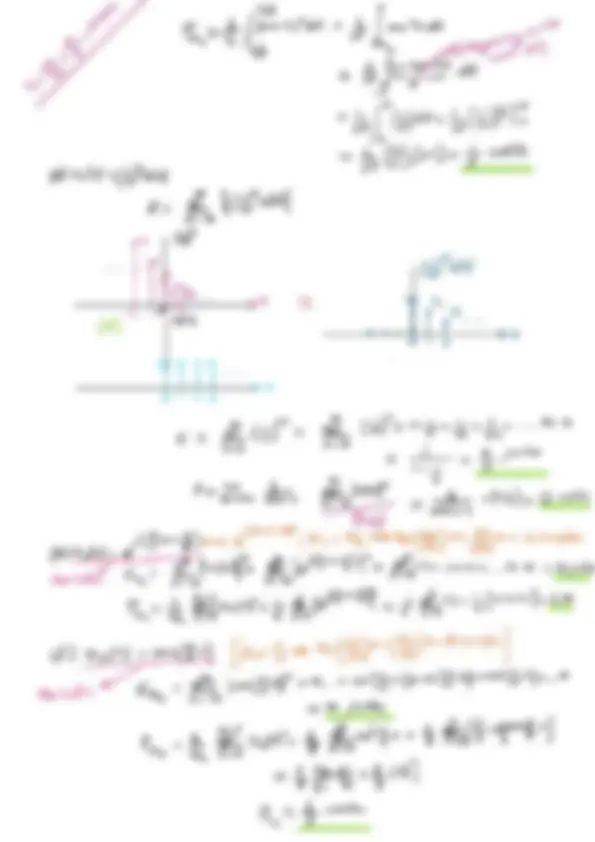
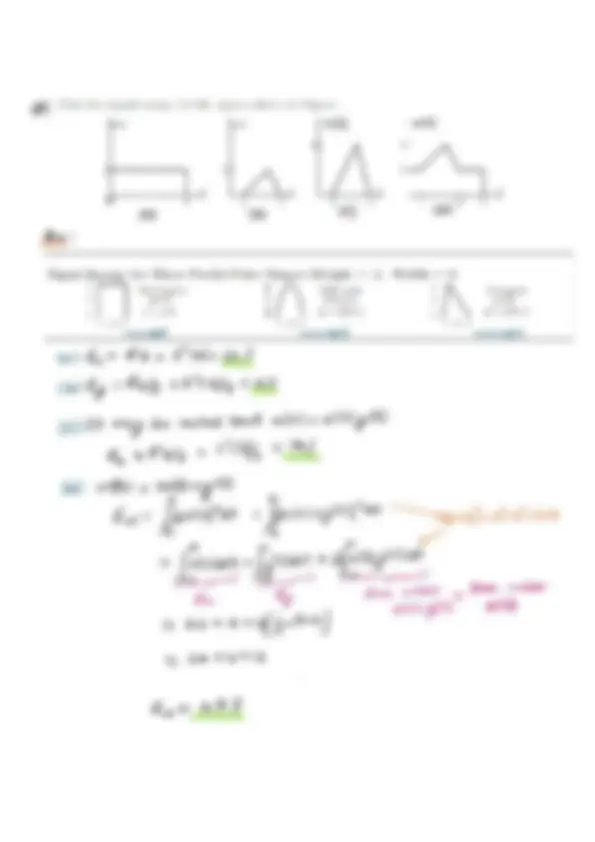
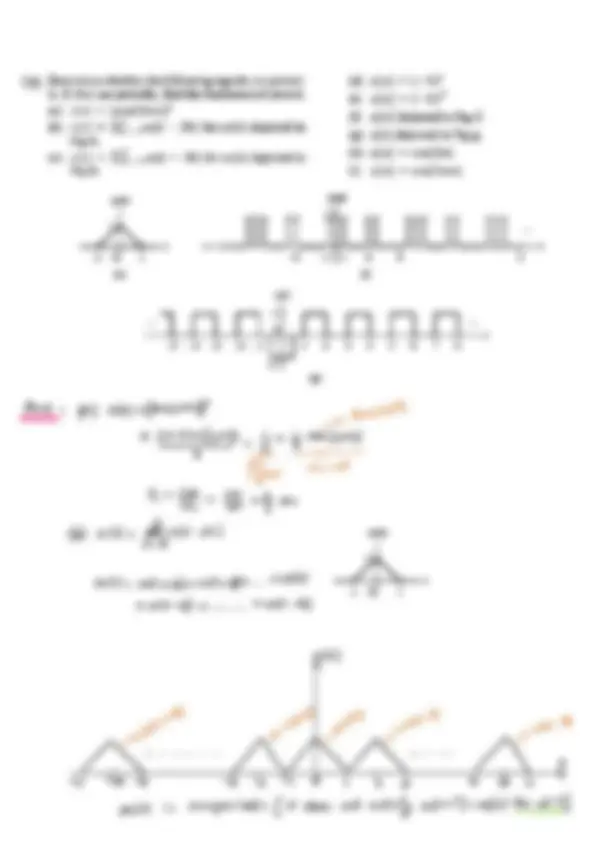
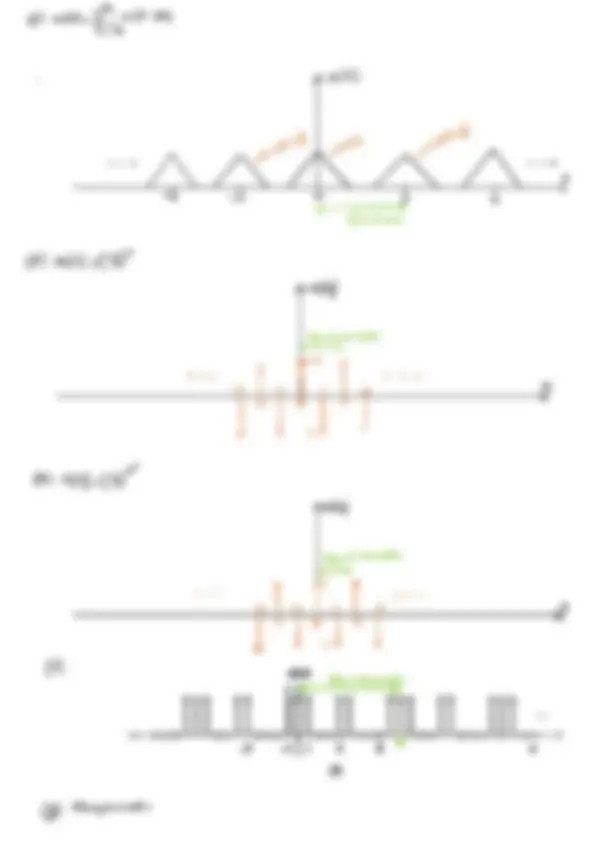
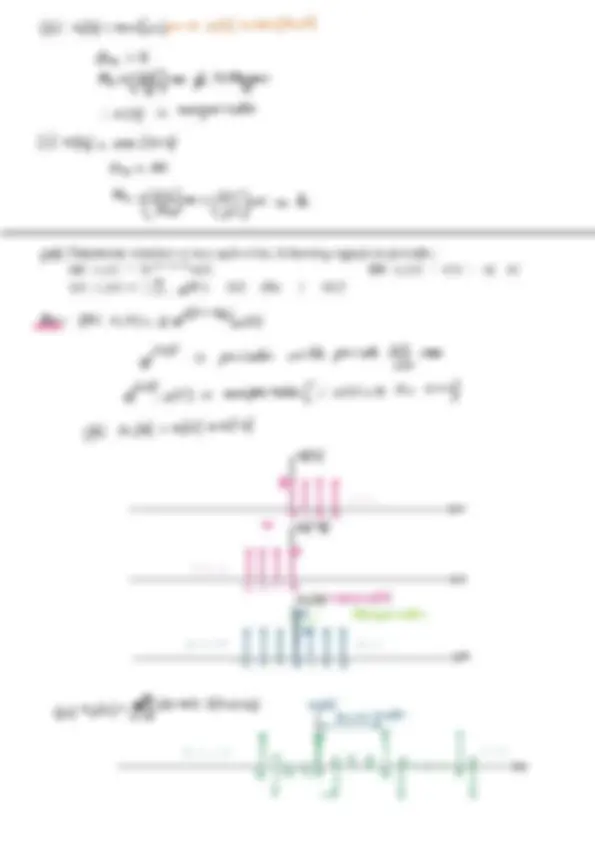
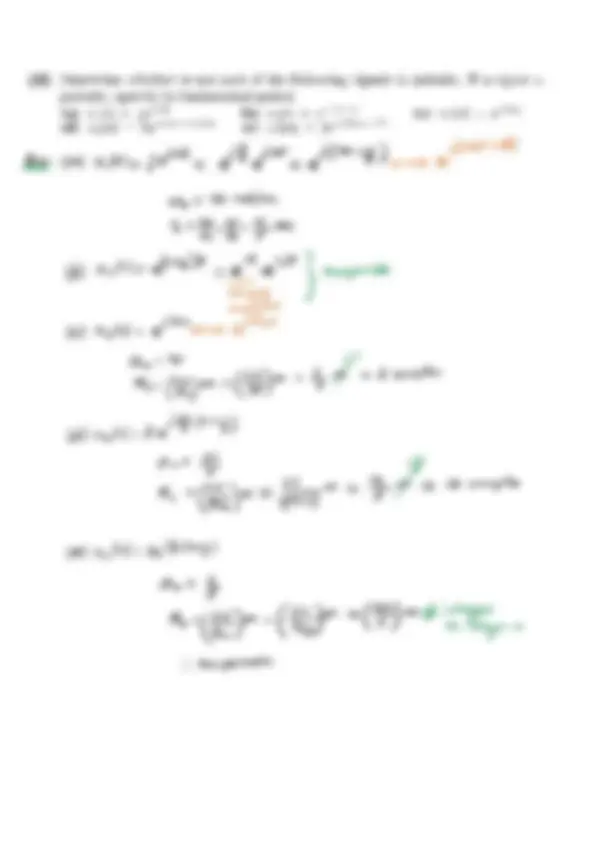
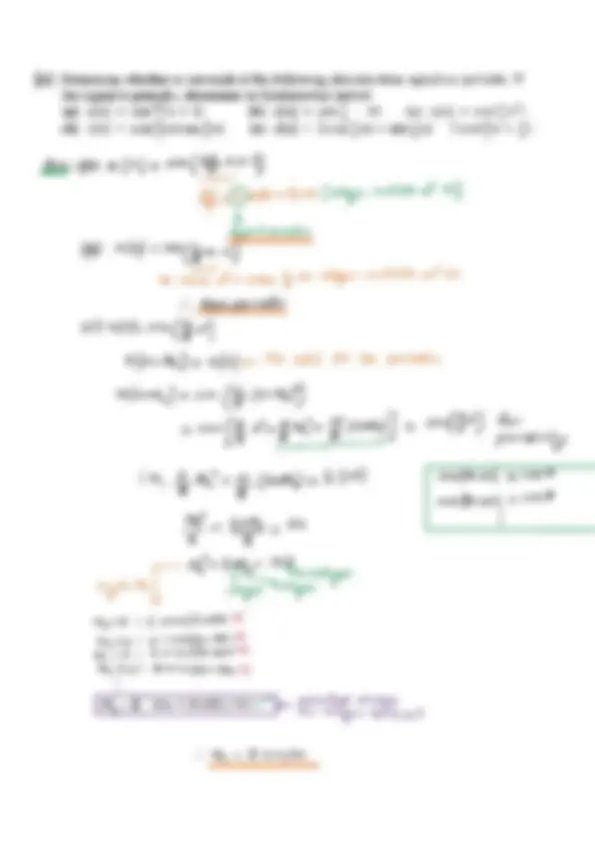
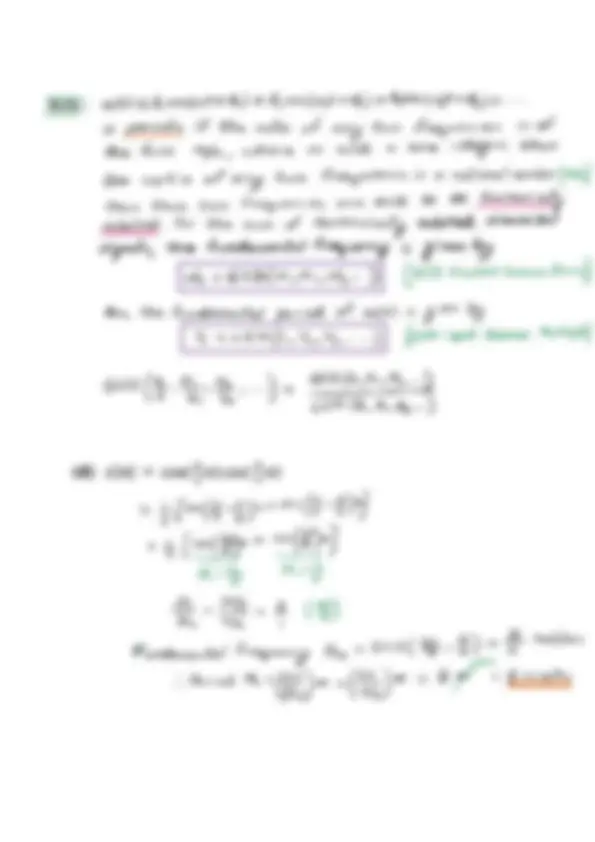
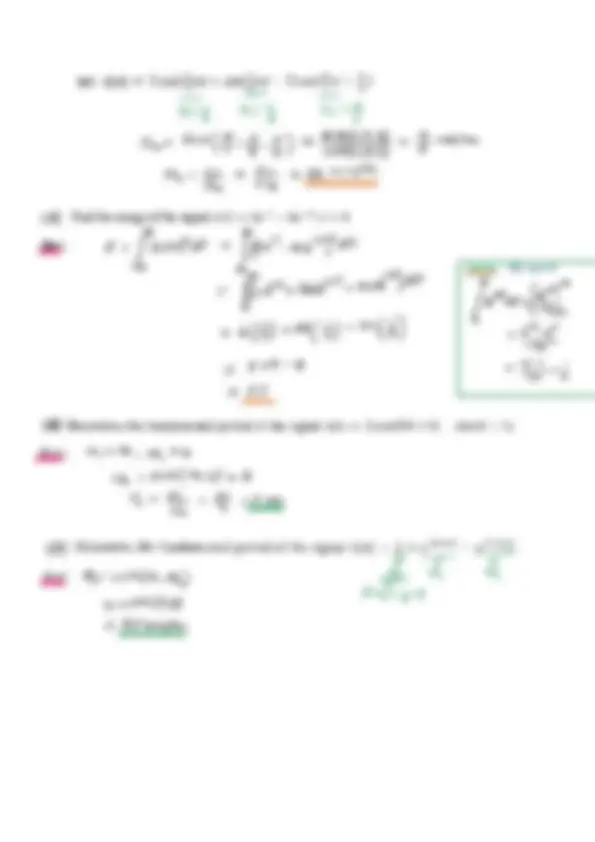

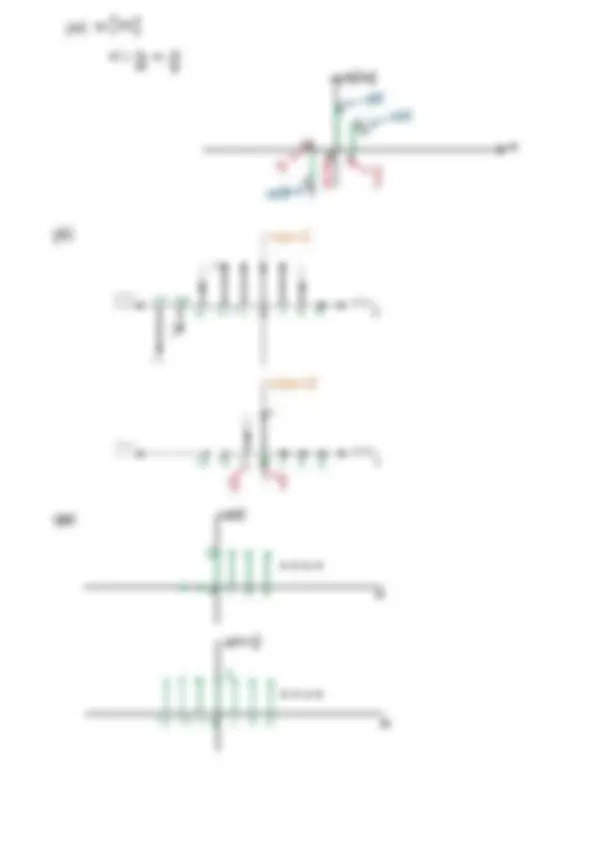
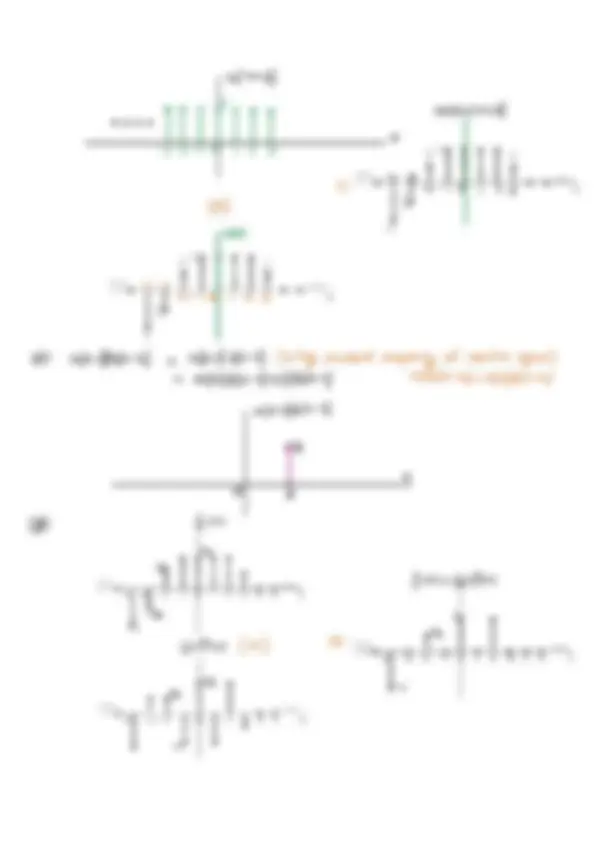
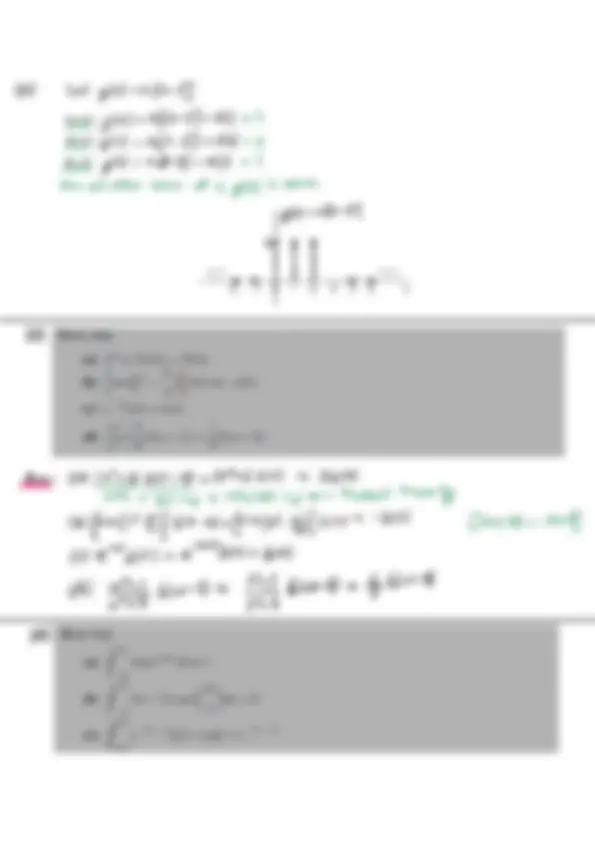
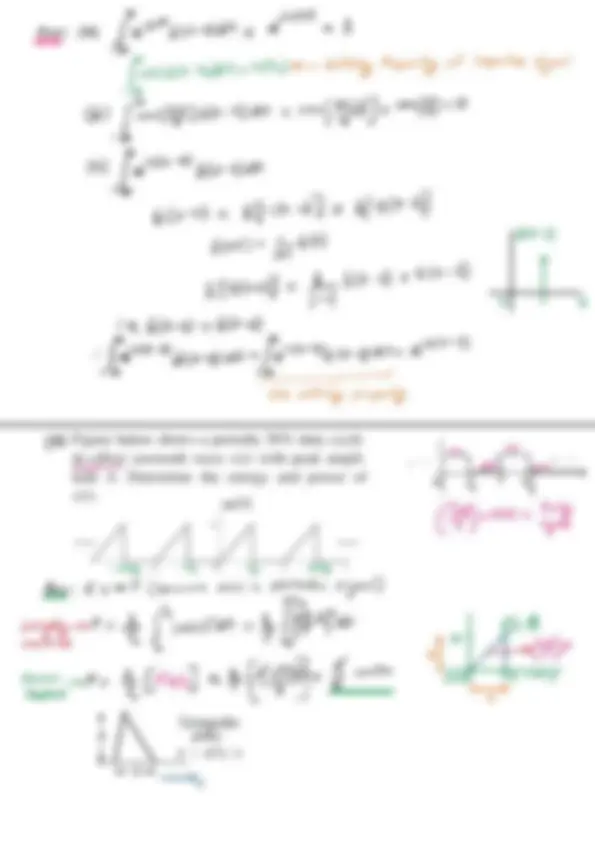
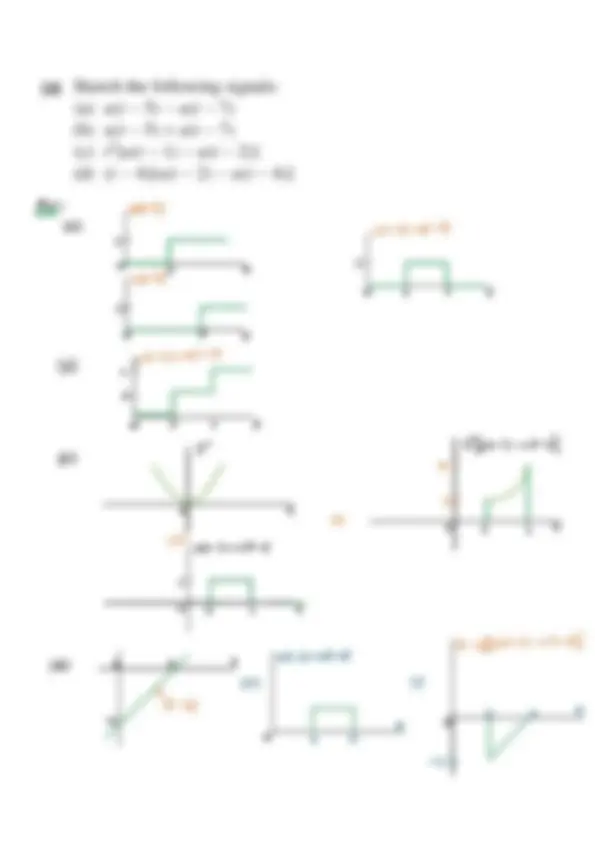
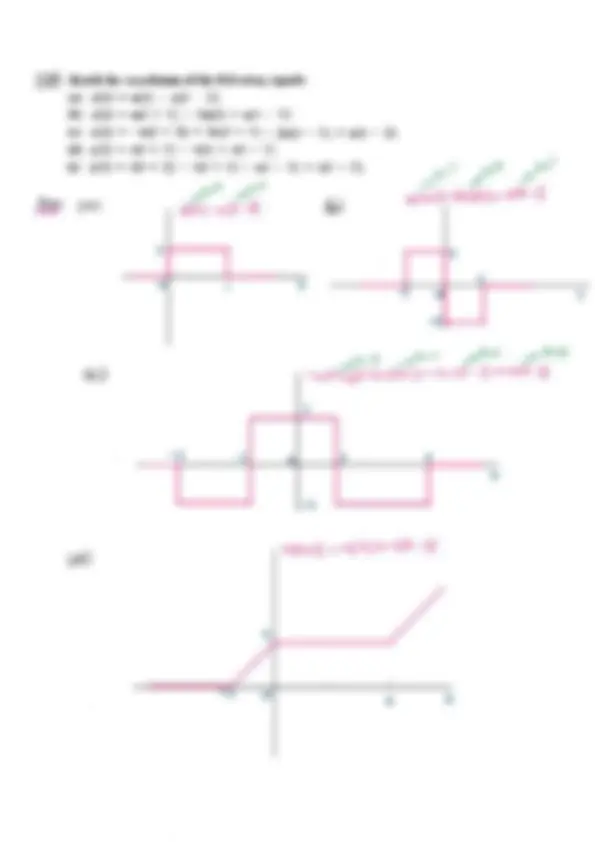

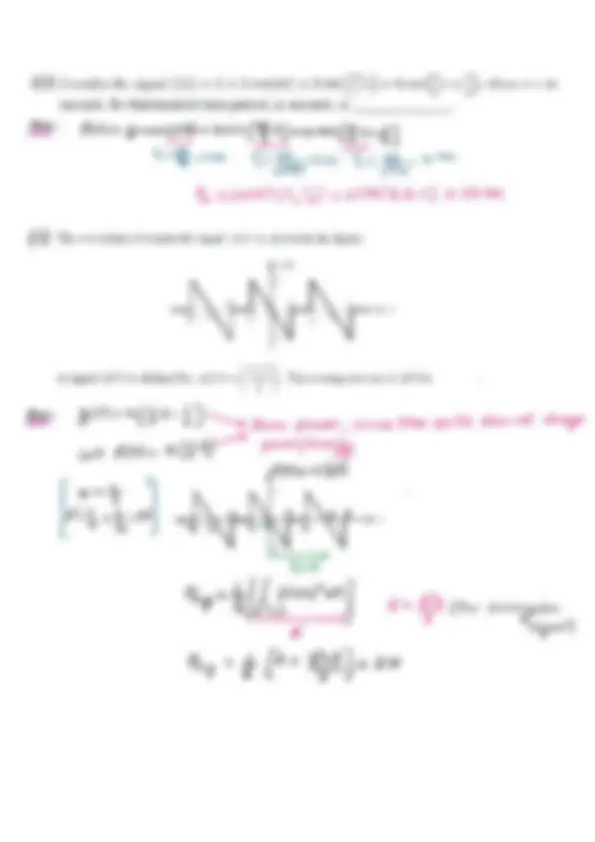
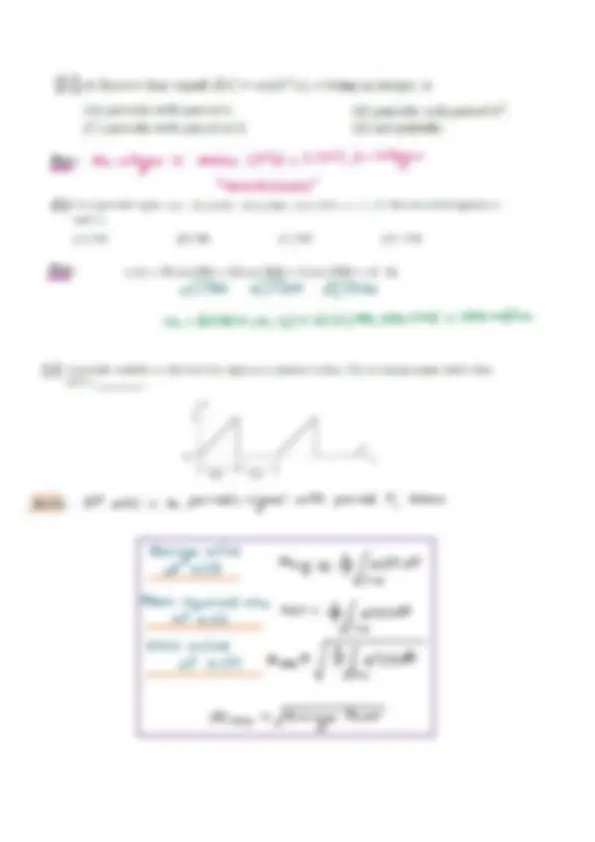
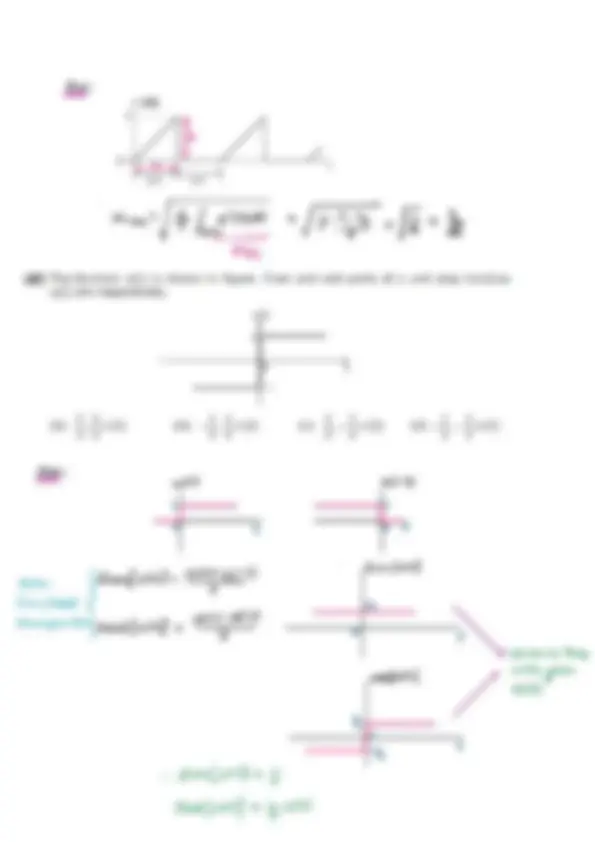



Study with the several resources on Docsity

Earn points by helping other students or get them with a premium plan


Prepare for your exams
Study with the several resources on Docsity

Earn points to download
Earn points by helping other students or get them with a premium plan
Community
Ask the community for help and clear up your study doubts
Discover the best universities in your country according to Docsity users
Free resources
Download our free guides on studying techniques, anxiety management strategies, and thesis advice from Docsity tutors
This course provides a foundational understanding of signals and systems, essential for fields such as electrical engineering, electronics, and communications. It covers the mathematical representation, classification, and analysis of both continuous-time and discrete-time signals and systems. Topics include: Classification of signals (continuous/discrete, periodic/aperiodic, energy/power signals) Basic system properties (linearity, time-invariance, causality, stability) Time-domain analysis using convolution and differential/difference equations Fourier Series and Fourier Transform for signal analysis Laplace Transform and Z-Transform for system analysis Sampling theorem and its applications Introduction to filters and system response
Typology: Lecture notes
1 / 40

This page cannot be seen from the preview
Don't miss anything!

































Transmitter Channel Receiver
s
Signals and Systems i) Signals and Systems - Simon Haykin ir) Signals avd, Systems ~ Alan V O ppenheim ti) Linear Systems and Sigrels - B-P- Lathi Signals : A signal is Aefined asa function of one or ore variables , which con vey s intovmatim on the nature of a physical phenomenon. When the functino Aeperds on a sin le Variable, the signal is soid to be one- dimensionalen pees When the function depends on Lwo or More vaviables the signal jis said to be malti- Aimersioral (ex: image video Fignald) Systems: A sgstem is defined as an entity that manipulates One sr move Signals to acesmplish a tu netio . Input Signal Output Signal —___»] _—$$_—_» System Block Diagram Representation ot a System Estimate Message Transmitted Received of message signal i signal signal ae Transmitter |_signal Channel _Se Receiver a Elements of a communication System Classification of Signals (1) Continuous- time and _Discrete~time signals A signal x(t) is said to be a continuous- time signal if it is detined for all time t. : x —> Aependert veriable x(f) t> indeperdent Ex. aN “— a : Continuous-time signal. A discrete -time signal is defined only at Asscrete instants of time. the independent Variable (time) Aas values only. A discrete-time sigra| is often discrete derived from a conti nucuwy - time signal by sampling ‘t ot a unitom rate. Let T denote the sampling juaterval (sampling pertod) . Sampling of a continuo ~ time Signa x(t) at time t=anT gields a sample of value 2(n7). A set of such samples Generates a discrek- time Signal , devoted by Hn] = X(nT) ; N=O,41 42,43, .-. xf o} x(t) ez) ae) 7 “nl woenet wa Me a7) a : salle a (a) (b) (a) Continuous-time signal x(t). (b) Representation of x(t) as a discrete-time signal x[7]. A complex sipnal x